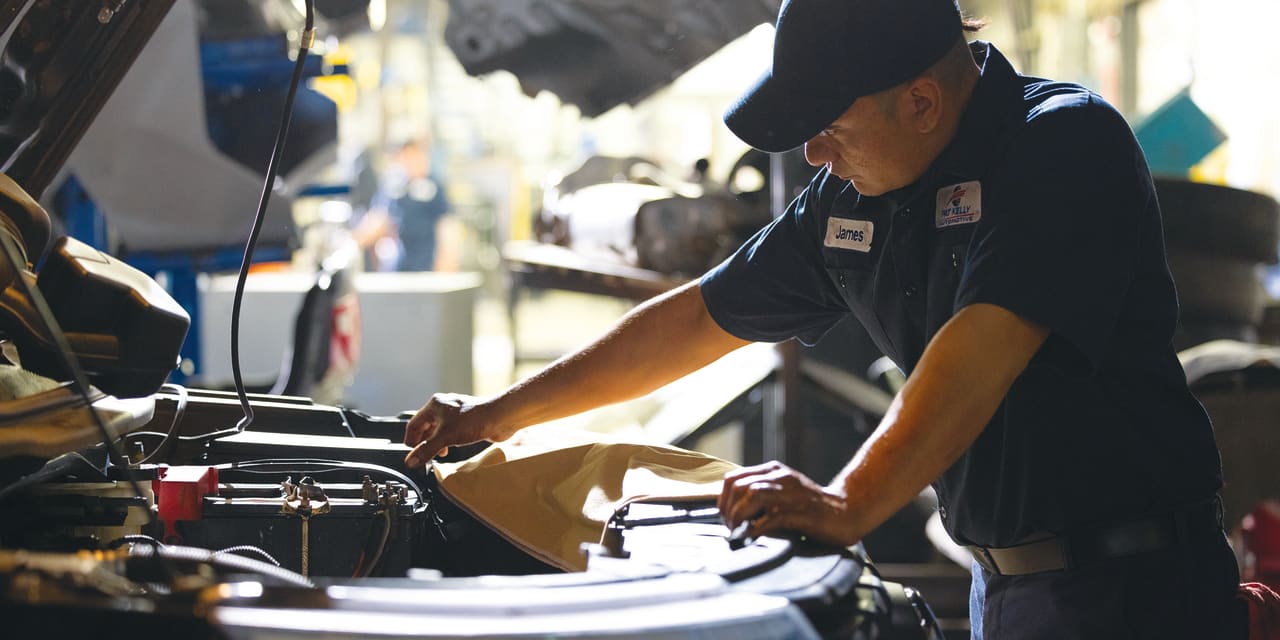Newly public uniform-rental company
Vestis
has a pitch to investors: We’re about more than just dirty laundry.
Vestis (ticker: VSTS) was spun out from
Aramark
(ARMK) in early October, allowing the parent company to focus on the food-services business. Its Aramark Uniform Services segment became the independent Vestis—with its own management team and pitch to investors. So far, Vestis stock has fallen 13%, to $16.79, since the start of trading on Oct. 2, while Aramark has gained 13%.
Still, there’s a lot to like about Vestis, starting with its uniform-rental business. Some jobs require protective or technical apparel, while standardized uniforms convey a consistent brand image to customer-facing roles. Laundering and maintaining a wardrobe for an entire workforce can be a pain for companies large and small in all industries. Outsourcing that service to a provider like Vestis can reduce complexity and cost.
For Vestis, the business brings recurring revenue, economies of scale, and ample room for growth. The company’s trucks visit each of its 300,000 customer locations every week, dropping off five clean uniforms per employee and picking up five dirty ones. Those are brought back to one of its 350 facilities to be inspected, laundered, and repaired or replaced if necessary. Some 92% of the Aramark unit’s revenue in fiscal 2022, which ended last September, was recurring under long contracts with customers, and 93% of clients renew.
That business can get better. As an overlooked division of Aramark, No. 2 player Vestis wasn’t able to compete against industry leader
Cintas
(CTAS) or No. 3 player
UniFirst
(
UNF
), lagging both in growth and profit margins. Greater success as an independent company will come from adding new customers and expanding business with existing ones, a path already laid out by Cintas, which has become a $53 billion behemoth. Shares have risen 25% a year for a decade.
“The opportunity is tremendous,” says Vestis CEO Kim Scott. “We’re operating in a highly fragmented market, with the big three players controlling only [25%]…and there’s a lot we can do as we gain density and scale.”
Vestis isn’t starting from scratch. More than half of its revenue comes from supplying aprons, floor mats, towels and linens, cleaning products, restroom supplies, first-aid kits, and other workplace goods—products that are less tied to employee head count than uniforms and provide opportunities for cross-selling.
Management says that the average client uses between 30% and 40% of the company’s offerings. Selling just one more product to all existing customers would add $900 million in revenue, the company estimates, versus expected fiscal 2023 revenue of $2.8 billion and adjusted net income of $155 million.
Vestis has reorganized its sales teams and operations to focus on improving “route density”—selling more products to customers and optimizing logistics to earn more revenue from less driving. That’s key to its plan to increase sales, expand margins, and narrow the gap with its larger rival.
“You have an industry leader [in Cintas] that has shown how to add value to a dirty-laundry business, cross-sell more, and increase prices,” says J.P. Morgan’s Andrew Steinerman, who rates Vestis stock Overweight with a $20 one-year price target, up almost 20% from Friday’s close. “It’s inspiring the rest of the industry to do the same.”
Vestis’ guidance calls for revenue growth of 5% to 7% annually through fiscal 2028, when its margin of adjusted earnings before interest, taxes, depreciation, and amortization, or Ebitda, should reach 18% to 20%. That’s up from 14% now, though still below Cintas’ 25%. The company will also need to keep a close eye on costs: Vestis’ unionized workforce has negotiated raises in the coming years, while its competitors aren’t unionized.
Management’s first order of business will be to cut debt. The company has net debt of $1.5 billion versus an equity value of $2.2 billion. Management’s goal is to reduce leverage from its current 3.9 times fiscal 2022 estimated Ebitda to a range of 1.5 times to 2.5 times by fiscal 2026. Vestis’ borrowings include an $800 million term loan that the company needs to refinance in public markets within the next two years. And while the business generates ample recurring cash flow to support its debt load, a recession wouldn’t be painless.
“Uniform companies tend to suffer in a downcycle with rising unemployment, so the risks are sizable,” says Brian Frank, chief investment officer of Frank Capital. “The market could get nervous about Vestis’ ability to service this debt should profits decline in a recession.”
Vestis will report results and present guidance on Nov. 29. Investors will want to see early signs of progress on profit-margin expansion paired with revenue growth.
Vestis stock trades for 16 times expected earnings over the coming year, versus 35 times for Cintas and 23 for UniFirst. That lower valuation should compensate investors for taking a chance on it as it aims to transform itself into a more Cintas-like company. Vestis is a higher-risk, higher-potential return turnaround bet on a small-cap value stock. Progress on its debt paydown will shift more value to equity holders, while management’s efforts to boost profit margins will lift earnings.
Stifel’s Shlomo Rosenbaum sees that driving the stock to $41 in 2027, up 145%. “This is an execution story,” he says—one that could play out well for investors who get in early.
Write to Nicholas Jasinski at [email protected]
Read the full article here













